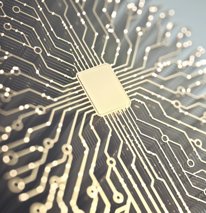NVMe SSD has become a critical technology in the data center flash storage market in recent years, and expectations of storage systems equipped with NVMe SSDs have never been higher. The general expectation is that a storage system equipped with NVMe SSDs would achieve much higher performance (IOPS/MBps) and faster response times to access data compared to one equipped with SAS SSDs.
Hitachi Vantara is a leading brand in block storage, as noted by Coldago Research’s End-User survey 2020, and it is the continued innovation from our engineers that keeps our customers running their business-critical applications on our solutions.
The latest innovation from Hitachi announced this week is the Virtual Storage Platform (VSP) E990, the newest midsized enterprise platform designed to utilize NVMe to deliver industry-leading performance and availability. In this blog post, we’ll take a brief look at the highlights of the VSP E990 architecture that allow this new NVMe storage platform to supercharge your applications with real power!
First, let’s take a look at the numbers. The VSP E990 can deliver up to 5.8 million IOPS and 16.6PB of effective capacity. The cache architecture has been streamlined, permitting read response times as low as 64 microseconds. Improvements in reliability and serviceability allow the VSP E990 to claim 99.9999% availability, wrapped up with Hitachi’s 100% Data Availability Guarantee – the first ever in the industry. The system features a single, flash-optimized SVOS RF operating system on two controllers with 56 processor cores, sharing a global cache of 1TiB.
How did we achieve all this in 4U? Well, we started with the Hitachi innovation learned from integrating NVMe into the VSP 5000 series that we released to the market in October 2019.
Like previous Hitachi products, all VSP E990 processors run a single SVOS RF image and share a global cache. Dedicated cache boards have been eliminated, and cache is now distributed across individual controllers for fast memory access and better resiliency.
Each board is connected to a controller via 8 x PCIe Gen 3 lanes, and thus has 16 GB/s of available bandwidth (8 GB/s send and 8 GB/s receive). Each controller therefore has up to 64 GB/s of front-end bandwidth and 32 GB/s of back-end bandwidth. All this combined allows us to offer the most responsive storage solution on the market!
On top of all this we have taken the innovation from the VSP 5000 series, such as our adaptive data reduction performance (deduplication and compression), and dropped it into the E990. This now enables us to offer a Total Efficiency Guarantee of up to 7:1 in capacity savings. Hitachi wants to offer you more; we understand that these guarantees mean a great deal of effort from you. With this in mind the VSP E990 now gets the 4:1 data reduction guarantee and we don’t even need to analyse your dataset – we offer this guarantee sight unseen!
PROTECT USER DATA AND MAINTAIN AVAILABILITY
Protecting customer data and ensuring it’s always available is central to Hitachi’s cache architecture. To achieve this goal, cache is divided into “A” and “B” sides residing on separate physical components, with each side having an independent power supply.
Customer data is thereby protected from any single point of failure. In the event of a complete power loss, cache backup modules maintain power until cached data is backed up safely to dedicated SSDs.
To protect against a single failure point, all writes are mirrored to the A and B sides of cache. A write acknowledgment is sent to the host as soon as the cache mirroring is complete. In addition, a data integrity code, created by the fibre channel protocol chip for each 512KiB unit received from the host, is checked at each stage of the transfer to guard against data corruption.
VSP E990 cache architecture also improves protection for the important shared memory region by maintaining a redundant copy of this metadata under nearly all conditions. With this improved architecture we can recover a redundant copy of critical shared memory within a few minutes, without the need to wait for hardware maintenance. This is accomplished by keeping two reserved areas on the A and B sides of cache, in addition to the master and mirrored copies of shared memory.
RESILIENCY ENHANCEMENTS
Resiliency enhancements allow the VSP E990 to claim class-leading 99.9999% availability. These improvements include:
- An 80% reduction in rebuild time for flash drives.
- A more robust cache directory system that allows latency-sensitive host applications to stay up by avoiding write through mode.
- Reserved areas on separate power boundaries that allow quick recovery of a redundant copy of shared memory when a hardware failure or power outage occurs.
- Hitachi Flash Assurance Program wraps up our data availability and efficiency guarantees and then underwrites the TCO of your solution.
- And as noted above, Hitachi offers the industry’s first-ever 100% Data Availability Guarantee.
PERFORMANCE ENHANCEMENTS
Significant performance enhancements in the VSP E990 include:
- A streamlined cache directory system that eliminates redundant directory updates and improves response time.
- An increase to 24 dedupe stores and 24 DSDVOLs per pool for improved multiplicity of I/O when deduplication is enabled.
- Smaller access size for adaptive data reduction metadata reduces overhead.
- NVMe drive allows extremely low latency with up to 5X higher cache miss IOPS per drive.
SUMMARY
The architecture of the new E990 and our latest storage technologies is designed for performance and resilience from the ground up, which means we can guarantee 100% data availability – but let’s look at my observations and recommendations for when you should use the VSP E990 to meet your performance requirements:
- At lower drive counts, the NVMe drives superiorly outperform the SAS SSD drives in both IOPS, GB/s and response time.
- The performance benefits of NVMe drives are higher than the SAS SSD drives for read-intensive workloads.
- For the workloads and applications that require improved response times, the usage of NVMe is recommended.
- When using data reduction and driving maximum IO rates, NVMe drives deliver better response times.
We’re excited about this new solution and the benefits it can bring to midsize enterprises looking for the best performance and value – and we hope you’re excited, too!




